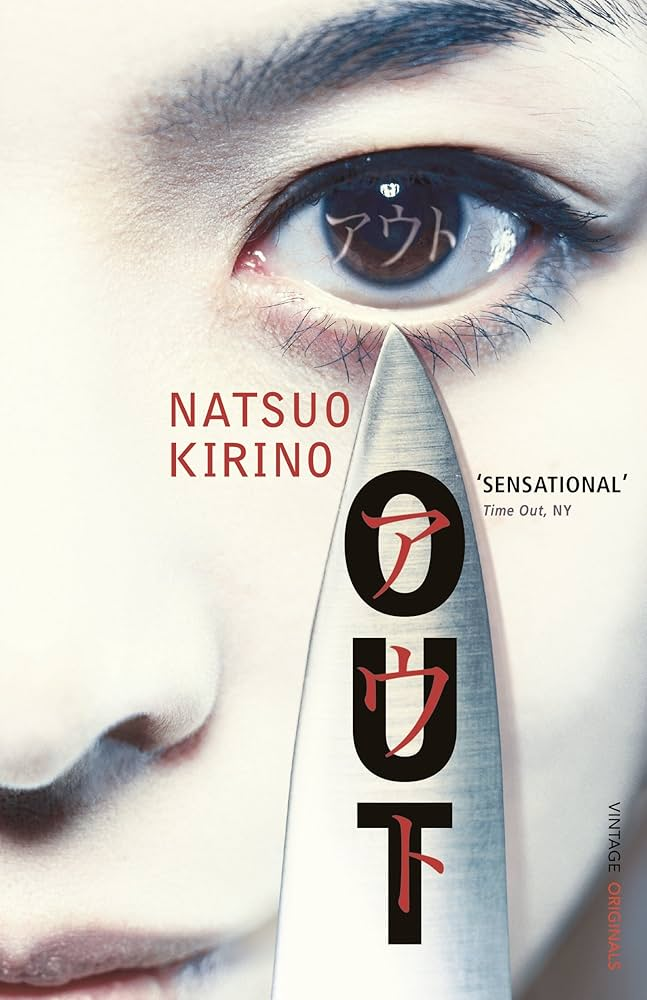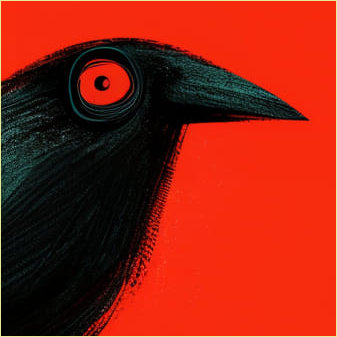2025 Reading Challenge 26 Out

Out is a 1997 Japanese modern, feminist, crime novel written by Natsuo Kirino and translated by Stephen Snyder. It concerns four work colleagues on the night shift of a factory line producing Bento lunches.

The colleagues are Masako (cold, scary, commanding), Yayoi (attractive, lost, passive), Yoshie (exhausted, experienced, burdened) & Kuniko (plump, vain, chaotic).
Before I go further, this novel is hardcore and at times a difficult read; death, dismemberment, violence, sexual assault and torture.
It came as a recommendation from two sources, one of which was via a James Ellroy introduction in a special edition and highlighted here in this video. I’m a fan of Ellroy, and he doesn’t usually give this sort of generous praise out for no reason. Secondly, it was a follow-up recommendation to my first reading challenge book, The Honjin Murders.
The book brilliantly paints the social and cultural situation that these four women find themselves in; in each case, their husbands are either gone or unreliable, or in the case of Yayoi, a downright monster. When it was released, it caused a great deal of controversy, with it seen as an attack on a traditional patriarchal society. It can be a pretty depressing and anger-inducing read as you feel for how each of the protagonists, even including the fairly unlikeable Kuniko, struggle for money, independence and even a sliver of happiness. It’s grim.
After the introduction to these vividly painted characters, the group are thrown together when one of them decides to change her situation through a fairly radical and violent event. The others, led by Masako, then formulate a plan to save themselves, and this draws in other characters: a violent, psychopathic nightclub owner, a greedy, cunning debt collector and a well-meaning but naive immigrant.
Kirino works this into a vortex of slowly spinning threads, as all the characters bounce off and into each other as the situation spirals out of control. Throughout the novel, the prose is cool and detached, but forensic, detailing violent and gory life-changing events with a matter-of-factness.
It always feels real, the characters’ personalities changing and shifting as they face up to what is happening to them and their lack of agency. There is a bug motif that runs through the spine of the book, both in the language and descriptions used, but also in the appearance of bugs and insects that flutter or crawl by in key scenes. It is done subtly and brilliantly, and you leave the novel with your skin itching and a feeling of desperation, a bug crawling through an urban landscape, searching for food, scrabbling and scooting away from so many dangers.
“When stones lying warm in the sun were turned over, they exposed the cold, damp earth underneath; and that was where Masako had burrowed deep. There was no trace of warmth in this dark earth, yet for a bug curled up tight in it, it was a peaceful and familiar world.”
A final reference should be made to the end scene; highly charged, graphic, explicit, extremely uncomfortable and has left many discussion groups in conflict with each other on whether the scene works, is too gratuitous, or a suitable feminist allegory. Given I’ve finished it in the last 24 hours, I need some time to process. It’s up there with some of the most uncomfortable passages I’ve ever read, but on initial consideration, there seems to be a believable truth in the arc of Masako, even if I’ve not wholly understood it.
I rated it 7.9 out of 10.
TTRPG Thoughts:
I will be giving away major SPOILERS from here on in.
So, for an investigative RPG, it is a masterclass in trying to trace the evidence and piece together the clues of a crime. There is a particular section where the nightclub owner hires a series of private detectives to interview and investigate the four women, to find out who was involved in the killing of the victim, which the nightclub owner was blamed for.
These interviews are presented as brief snippets of conversation or reports, and they are a lovely example of intimidation, reassurance, and charm (Common Gumshoe investigative abilities). These are then allied with bureaucracy, accounting, and library use (more Gumshoe) to construct the physical evidence to go alongside the interpersonal.
This is all after the fact. The book also focuses in graphic detail on how the four women dispose of the corpse, the process they go through to try and remove evidence - cutting off finger tips, chopping into discrete packages and distributing these packages across the city. Also, where they are tripped up - not removing the palms, leaving some of the distribution of packages to Kuniko, who, lazy as she is, just leaves them all in a park bin.
Some gut-wrenching writing covers the above scenes, but useful for your investigative RPGs, where you are looking for realism and insight into crimes and the solving of them through evidence and clues.
“The sound of the knife sawing through cartilage and bone echoed in her mind long after she had finished.”
